For a simple yet stylish addition to your dining table decor, make an embroidered placemat. Not only can it add a certain sense of style to the table, but it can help keep your table top nice and clean!
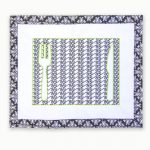
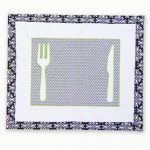
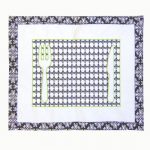
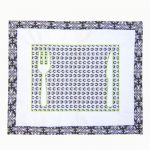
For a simple yet stylish addition to your dining table decor, make an embroidered placemat. Not only can it add a certain sense of style to the table, but it can help keep your table top nice and clean!




Looking for a breezy topper to keep you nice and comfortable when the weather is all over the place? The cape is our go-to layer.
This effortless piece is great for jazzing up casual outfits and can be easily tucked into your day bag when not worn. Play up the style with fun colours and summer prints or layer on a sleek belt for a more polish look.
Click here to download the instructions in a PDF file.
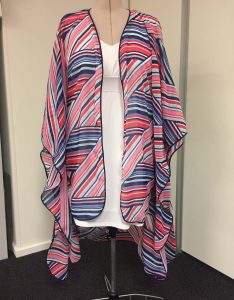
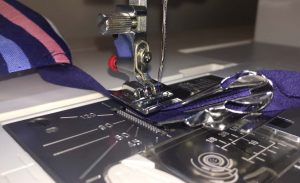
The binder foot is used to apply pre-folded bias binding tape or bias tape you have cut yourself to the edge of fabric in one easy step. It is equipped with a small funnel to fold and guide the binding over the fabric edge before it reaches the needle and can be used with either zigzag or decorative stitches as well as straight stitch. 10 mm to 14 mm bias tape can be used.
This Accessory of the Month has a bonus project for you to make using the Binder Foot.
Valentine’s Day will be here sooner rather than later, so bring out your sewing machines and brandish those needles!
Giving a handmade gift says that you spent time, energy and thoughtfulness on your loved one. Scroll on for this easy-to-make cushion to get you and your loved one all hearted up for V-Day.
No matter how advanced or sophisticated sewing machines have become, the basic operation of a sewing machine stays pretty much the same: the needle does the work – pulling top thread to meet the bobbin thread to form a stitch.
Because it’s so small and largely unnoticeable, sometimes it’s easy to overlook the importance of your sewing needle. What many people don’t realise however, is that the needle has a tremendous impact on your project. Not only does it affect how you stitch, it also affects the overall look and quality of your work.
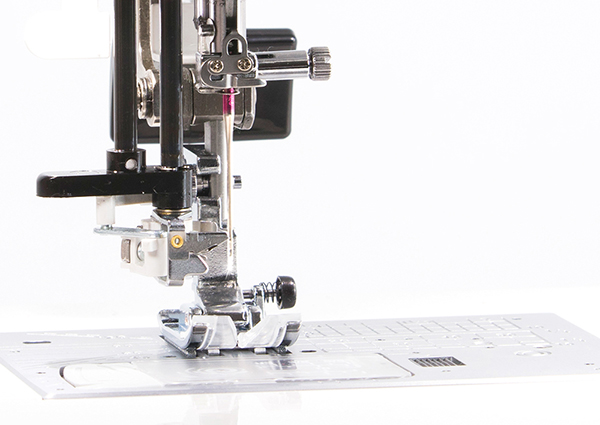
Think of it this way: a good needle in your sewing room is like a good knife in your kitchen!
You probably already know this: the average sewing life of a needle is 8 hours. When a needle is piercing your fabric at 600 to 1,600 stitches per minute, that is TEN times per second at 600 SPM. Small things like a blunt point or an eye that’s beginning to wear, can make a big difference in the quality of your stitches. A good rule of thumb is to use a new needle at the start of every project, ensuring less issues and great sewing results.
Additionally, using the correct Janome needle for the fabric you are sewing will help you achieve optimum stitch results from your sewing machine. Today we’ll take a closer look at the different sizes and types of Janome needles available.
For starters, let’s get to know your way around a needle.
1. Needle Anatomy

All sewing needles have essentially the same parts:
Shank: The upper end of the needle, which is inserted into the machine. On the vast majority of domestic needles, the back of the shank is flat to make it easier to correctly insert them. (Round = Front | Flat = Back)
Shaft: The body of the needle below the shank. The size of the needle is determined by the diameter of the shaft. The smaller the number, the smaller the shaft will be. The eye will increase in size proportionately to the size of the shaft.
Front Groove: This groove, located on the front of the shaft, is designed to allow the thread to lie tightly against the needle as it passes through the fabric
Scarf: The short indentation above the eye at the rear of the needle. It allows the hook to catch the thread loop, made by the needle, to form the stitch. Janome speciality needles are designed to have a longer, deeper scarf to help eliminate skipped stitches.
Eye: You know what this is – the hole at the bottom of the needle through which the thread passes. Janome needles have especially smooth eye holes to keep thread feeding smooth and to avoid snagging.
And finally the Point penetrates the fabric, allowing the needle to deliver the thread to the hook to form the stitch. There are different Points designed to penetrate different types of fabric.
2. Needle Sizes
Sewing machine needles come in an assortment of sizes designed for optimal sewing on different weights of fabric. Quite simply, the finer the fabric the finer the needle; the heavier the fabric the heavier the needle.
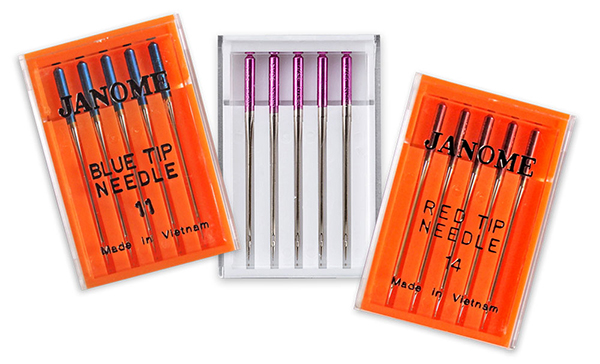
For example, if you are going to sew a sheer window curtain, you would want a fine needle such as size 9 or 11 to penetrate the light weight fabric. Using size 16 needle would leave giant holes in your fabric. With heavier home décor fabric such as wool and velvet, a larger size needle would offer extra strength and be less likely to cause stitching issues.
Tip: Keep an assortment of needles on hand to make it easy to choose the appropriate needle for each project.
3. Needle Types
Traditionally when fabrics were only made of natural fibres, changing to specialty needles wasn’t that critical. With the large variety of synthetic fabric on the market today, knowing your fibre content, weave and weight of the fabric are all considerations when choosing the right needle for your machine.
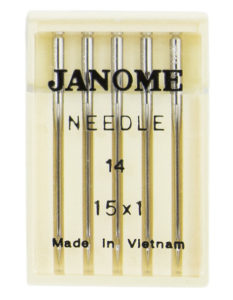
Janome Universal Needles also known as Regular Sharp Needles are used for general sewing of most woven fabrics. This includes chiffon, linen and wool.
Janome Ballpoint Needles have a rounded point and can slip between the yarns to prevent damage to knitted or stretch fabrics such as jersey and fleecy fabric. Janome Ballpoint needles also have a special scarf to eliminate skipped stitches on these types of stretchy fabrics.
Blue Tip Needles are one of our most popular needles for machine embroidery and light to medium weight stretch fabrics. Blue Tip needles have a ballpoint tip, so that when stitching with light fabrics like organza, there is less tendency for both the fabric fibres and embroidery stitches to break down.
Red Tip Needles are size 14 needles with a ballpoint, with added strength and durability. Made for stitching dense embroidery designs and when using metallic embroidery threads. The larger eye allows metallic threads to flow through without catching and breaking.
Top Stitch Needles are size 14 needles with a sharp point, with added strength and durability. The larger eye on this needle accomodates for the heavier weight top stitching threads.
Other specialised needle types:
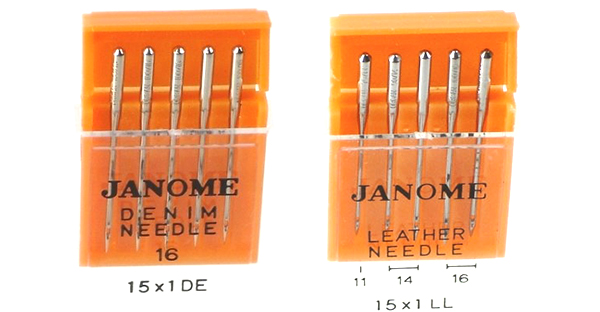
Denim: Has a very sharp acute point and a stronger shaft for denim, canvas and other tightly woven fabrics. Its eye also accommodates denim thread, being thicker than standard sewing thread.
Leather: Features a 3-sided chisel point which cuts clean through leather. It can also be used on vinyl, suede and rubber backed fabrics.
Purple Tip: Purple Tip needles have a special shaped cobra head with a ballpoint tip. This head design allows the stitch to be properly formed, when stitching knit and tricot fabric, ordinary sewing, free motion quilting and when embroidering. The Purple Tip needle is also designed to help prevent skipped stitches when stitching on these types of fabrics, or when embroidering.
Janome also offers a range of high quality specialty Organ needles that perfectly complement our sewing machines. Click here to find out more.
When it comes to accessories for sewing and stitching, few tools are as important and functional as the sewing needle. Make sure to ask your Janome dealer about genuine Janome Sewing Needles the next time you pop into a Janome store.
Are you a beginner sewist shopping for your first machine? With literally hundreds of options, choosing the right one can be a little overwhelming. Here are some handy hints to look out for…
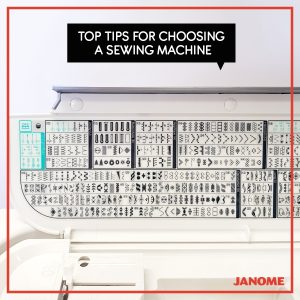
Stitches
One of the key things to consider when buying a sewing machine is the number of stitches that are available. Standard stitches include straight stitch, zigzag stitch, buttonholes and blind hem stitch. However these are pretty basic stitches and may not be sufficient for all sewists. You may decide to start out with a basic machine and upgrade later once you have worked out what you want to sew.
The other decision is to have a think about what you are likely to sew and if this will change in the future. If you already know the projects you’ll be working on or have a general idea of which stitches you would like and need, then this can be a simple starting point for selecting a machine. It is usually recommended if you are unsure of what to buy that you look at a sewing machine that can cater for later on as your skills and experience expand and evolve – you will thank yourself for that later!
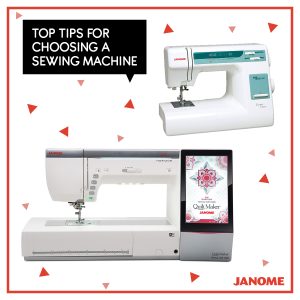
Mechanical or Computerised
While both types of machines perform the basic task of making uniformed stitches, factors such as skill level, needs and budget will influence which machine is more suited for you. With computerised models, you get additional features and extras that can save you time and enhance your sewing experience.
Some features that we love about computerised sewing machines include:
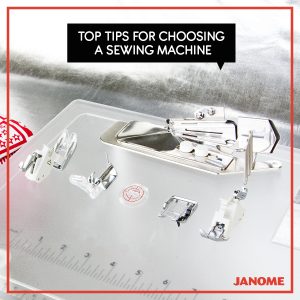
Attachments and Feet
Attachments and feet will be specific to what you plan to sew. Quilters will want a walking foot, free motion foot, and a 1/4″ foot. Garment sewists may look for a zipper foot, overcast stitching foot, buttonhole foot, and button attaching foot. Many machines may come with all of these feet, however, they are also available as optional accessories within the Janome range of genuine parts and accessories.
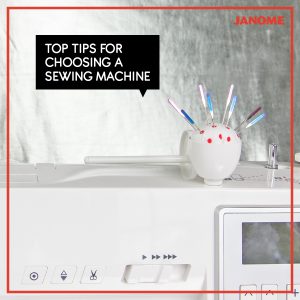
Additional Features
Many machines come with some awesome features that once you have them, you can’t go back. A few of our favourites include…
• Automatic Thread Cutter: Push a button to cut the thread. Once you start using it, it turns into a “must have” feature.
• Foot Pressure: Allows you to adjust the pressure that is applied to your fabric while it is moving under your sewing foot.
• Knee Lifter: Allows you to lift the presser foot while your hands are holding the fabric in place. Ideal for curves and sharp corners.
• Janome AcuFeed™ System: Top and bottom feed dog system makes it a breeze to sew through multiple layers and heavy fabric. Highly recommended for quilters or working with multiple layers.
• Wi-Fi capability: You can easily send embroidery designs from an iPad or computer straight to the machine.
What are some of your favourite features?
Sewing isn’t just a way to relax and express your creativity. It’s also a great way to save money and the planet!
With the right patterns, you can make yourself a stylish wardrobe for a fraction of what you’d pay buying those same fashions in boutiques. Holidays and special occasions become much more meaningful and affordable when you can make gifts and presents for your family and friends. We will happily embark on a little sewing DIY around the house to add personal touches. And not to mention, you’re doing your part to save the planet with sustainable sewing and upcycling projects.
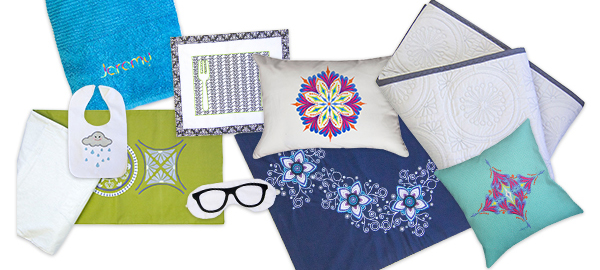
Embark on a “sew and save” adventure with us this month. Keep an eye out on our Inspiration page for easy sewing tutorials and projects.
In the mean time, don’t forget to grab a copy of our mailer in store.